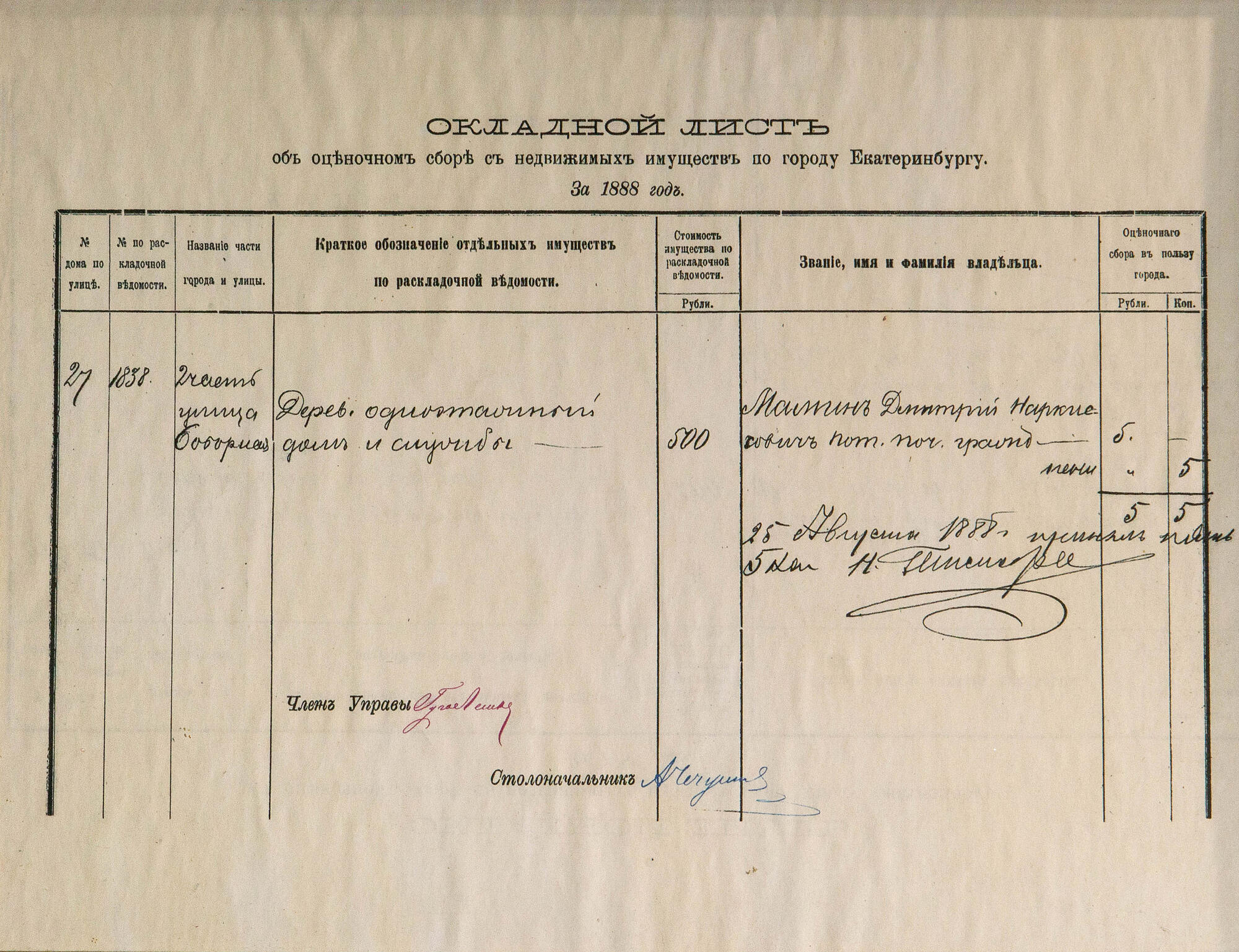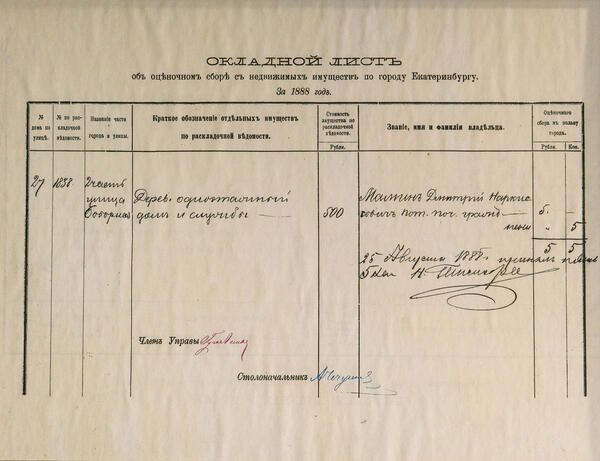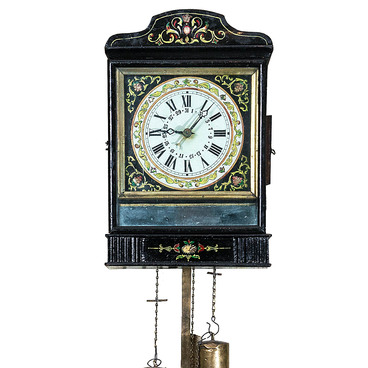In the vestibule of the house-museum, there is a tax notice for 1888 in a frame — a notice of the tax amount. It is located above the plan of the house.
The tax specified in the tax notice was called “oklad” in Russian. The tradition of paying the real estate tax existed in the 19th century. Money went to the city treasury of Yekaterinburg.
The tax notice was made in the form of a table. At the bottom were the signatures of the board member and the desk clerk.
In the spring of 1885, the writer Dmitry Mamin-Sibiryak bought house number 27 on Sobornaya street (now Pushkina street). Back then, the building was a typical four-room wooden hut with cold seni (mudroom) and a kitchen. Before that, the house belonged to a local resident, the widow Anna Sushina.
Mamin-Sibiryak paid 2,400 rubles for the hut. However, the tax notice shows a different amount — 500 rubles. It was an analogue of the modern cadastral value, an independent appraisal of housing.
The writer knew from the beginning that there was not enough room for the whole family. Therefore, as early as of December 2, 1885, a few months after the purchase, he wrote a letter to his mother. The writer consulted with her on how to rebuild the hut and drew a possible plan himself.
According to the documents, in 1888, the owner paid a tax of five rubles five kopecks — it was a big sum for the Mamins. A cow could be bought for this sum. Researchers were able to compare the cost thanks to the expense book kept by the landlady of the house, the writer’s mother, Anna Mamina. She wrote down all the prices: then the ticket “to the opera” cost a ruble 50 kopecks, a pound — about 400 grams — butter sold for 30 kopecks, and veal cost 4.5 kopecks per pound.
The tax notice also contained the information about the houseowner’s social class. The writer Dmitry Mamin-Sibiryak is designated as “hereditary honorary citizen”. This title in pre-revolutionary Russia was assigned to those who did not come from nobility, but achieved great success in art, politics or education.
The fund of the United Museum of Ural Writers in Yekaterinburg also contains a tax notice for 1903. By this time the house was clad in stone and brick, so its cadastral value increased to 600 rubles.
The tax specified in the tax notice was called “oklad” in Russian. The tradition of paying the real estate tax existed in the 19th century. Money went to the city treasury of Yekaterinburg.
The tax notice was made in the form of a table. At the bottom were the signatures of the board member and the desk clerk.
In the spring of 1885, the writer Dmitry Mamin-Sibiryak bought house number 27 on Sobornaya street (now Pushkina street). Back then, the building was a typical four-room wooden hut with cold seni (mudroom) and a kitchen. Before that, the house belonged to a local resident, the widow Anna Sushina.
Mamin-Sibiryak paid 2,400 rubles for the hut. However, the tax notice shows a different amount — 500 rubles. It was an analogue of the modern cadastral value, an independent appraisal of housing.
The writer knew from the beginning that there was not enough room for the whole family. Therefore, as early as of December 2, 1885, a few months after the purchase, he wrote a letter to his mother. The writer consulted with her on how to rebuild the hut and drew a possible plan himself.
According to the documents, in 1888, the owner paid a tax of five rubles five kopecks — it was a big sum for the Mamins. A cow could be bought for this sum. Researchers were able to compare the cost thanks to the expense book kept by the landlady of the house, the writer’s mother, Anna Mamina. She wrote down all the prices: then the ticket “to the opera” cost a ruble 50 kopecks, a pound — about 400 grams — butter sold for 30 kopecks, and veal cost 4.5 kopecks per pound.
The tax notice also contained the information about the houseowner’s social class. The writer Dmitry Mamin-Sibiryak is designated as “hereditary honorary citizen”. This title in pre-revolutionary Russia was assigned to those who did not come from nobility, but achieved great success in art, politics or education.
The fund of the United Museum of Ural Writers in Yekaterinburg also contains a tax notice for 1903. By this time the house was clad in stone and brick, so its cadastral value increased to 600 rubles.



